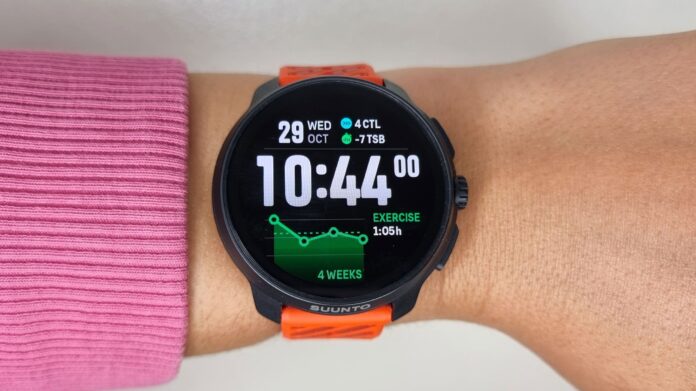Suunto, once a relative underdog in the world of sports watches, has been making waves lately with its impressive lineup. The brand gained recognition for its rugged outdoor gear but recently upped its game in the smartwatch arena. Its Run model was a budget-friendly hit for casual runners, and now, the Suunto Race 2 takes aim at the premium market with its direct competitor to the Garmin Forerunner 970 — offering compelling features without breaking the bank.
While not as ubiquitous as Garmin or Coros, Suunto’s resurgence highlights a growing trend: consumers are seeking alternatives to the big names in wearable technology, prioritizing design and specific functionalities over brand recognition alone.
A Striking Watch With Substance
The Suunto Race 2 boasts a sleek stainless steel or titanium body that feels surprisingly light on the wrist despite its solid construction. Its standout feature is undoubtedly the vibrant 1.5-inch AMOLED display, protected by scratch-resistant sapphire glass and offering excellent readability even in direct sunlight. This contrasts sharply with some competitors that prioritize functionality over aesthetics.
Beyond looks, the Race 2 prioritizes durability: it’s rated for water resistance up to 10ATM (suitable for swimming and most water sports) and can withstand temperatures ranging from -5°F to 130°F (-20°C to 55°C). In our testing, the watch stood up well to everyday wear and tear without scratching or showing signs of fatigue.
User Experience: A Mixed Bag
Suunto provides a range of customizable watch faces and band options for personalization. However, navigating menus can feel slightly clunky compared to smoother experiences offered by Garmin. While the Suunto app is generally user-friendly and provides in-depth workout analysis with personalized coaching tips, some users have noted frustrations with inconsistent heart rate tracking accuracy during high-intensity activities.
The Race 2 excels as a GPS running and hiking companion. It leverages five satellite systems for precise location tracking and includes offline map functionality for navigation. The inclusion of altimeter and compass functions further strengthens its appeal to outdoor enthusiasts.
Performance: Reliability with Room for Improvement
Battery life lives up to the hype, lasting around two weeks in smartwatch mode with regular use and a couple of longer workouts per week. The watch reliably handles app connectivity and data transfer without lag or hiccups.
However, while GPS performance is solid, the heart rate sensor occasionally delivers inaccurate readings during high-intensity workouts. This inconsistency might be acceptable for casual users but could prove frustrating for serious athletes relying on precise metrics for training optimization.
Should You Buy It?
Pros:
- Sleek design and durable build
- Excellent display brightness and clarity
- Long battery life (up to 18 days)
- Comprehensive GPS features with offline maps
- In-depth workout analysis and personalized coaching tips in the app
Cons:
- Inconsistent heart rate sensor accuracy during high-intensity activity
- Occasional UI quirks compared to competitors like Garmin
The Suunto Race 2 stands out as a stylish and reliable sports watch, particularly for runners and hikers who prioritize a durable build and long battery life. Its navigation tools and detailed workout analysis are noteworthy strengths. However, if you demand rock-solid heart rate accuracy for precise training insights or need smartwatch-level features, other options might be more suitable.
Alternatives
- Coros Pace Pro: A more affordable ($399) option with similar GPS performance and 20 days of battery life but with a less premium feel.
- Garmin Forerunner 165: A budget-friendly ($199) entry-level running watch offering great value but lacking the Race 2’s durability or advanced features.
- Garmin Forerunner 970: The ultimate performance companion at $749, boasting top-tier tracking accuracy and outdoor-focused features but at a significant price premium.














































